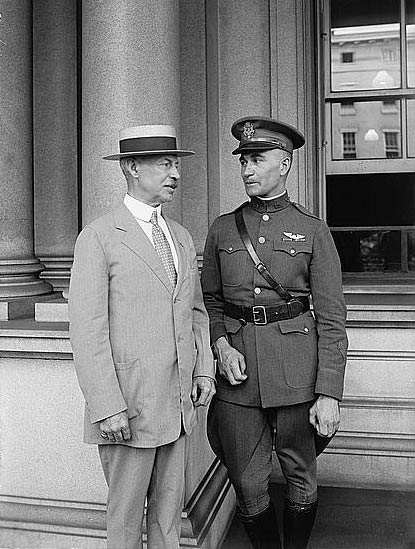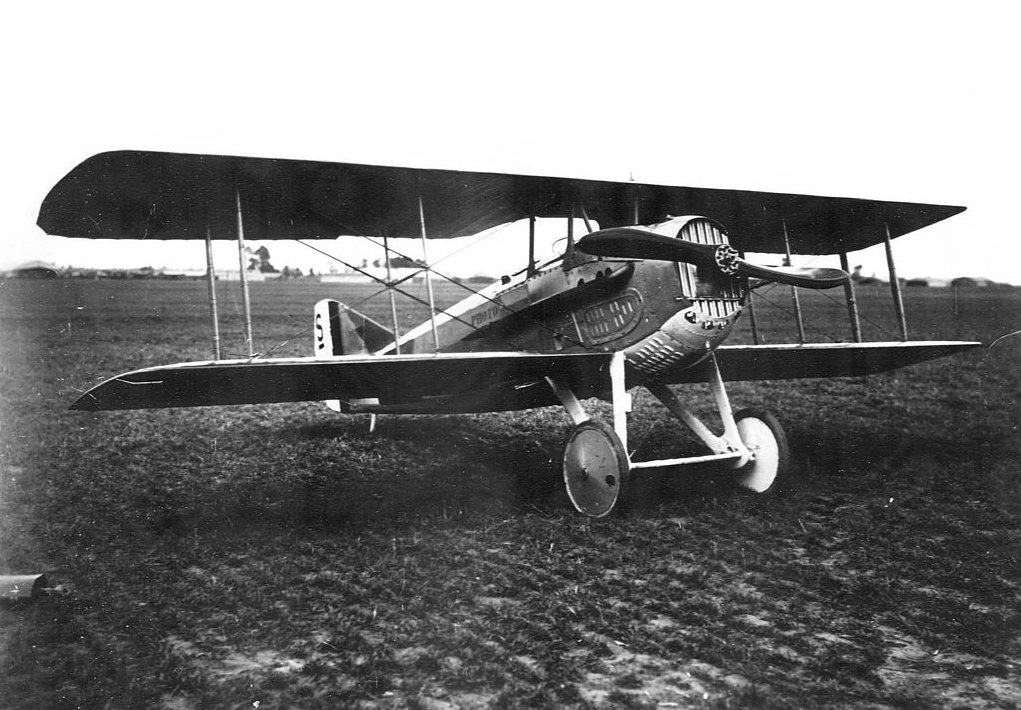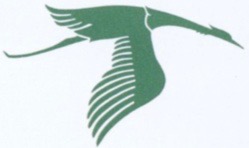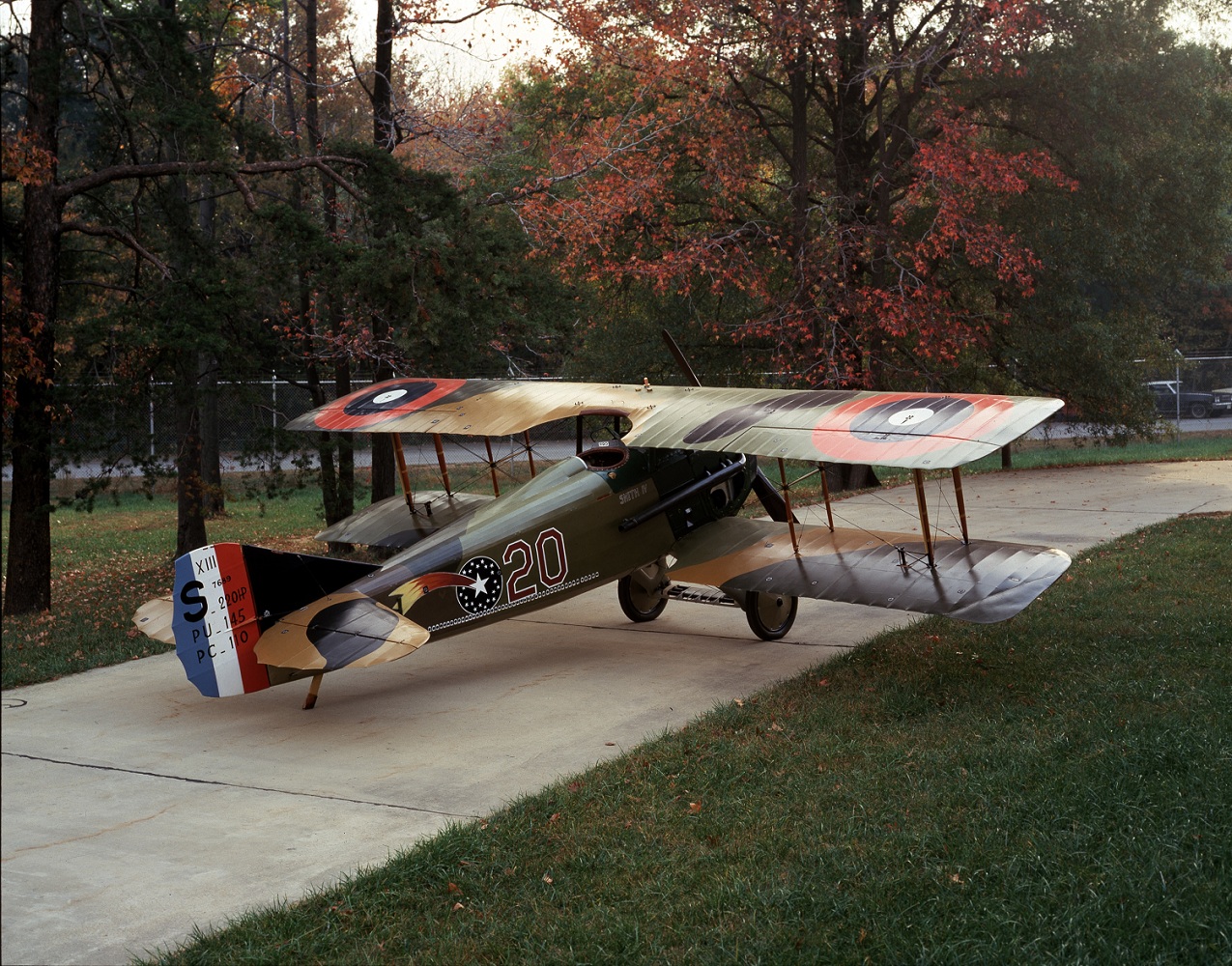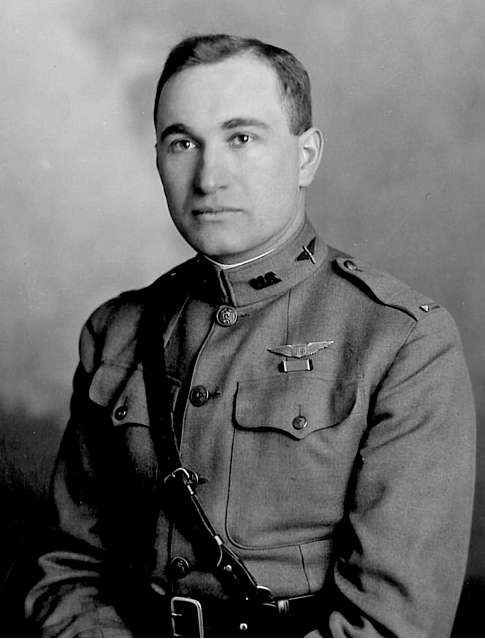
Russell Lowell Maughan was born at Logan, Utah, 28 March 1893. He was the sixth of eight children of Peter Weston Maughan, an accountant, and Mary Lucinda Naef Maughan. As a young boy he delivered newspapers on horseback, and worked as a farm laborer. He attended high school at Brigham Young College.
He attended Utah Agricultural College, a military land grant college in Logan. He graduated with a bachelor of science degree in agriculture, 8 May 1917. (The college was known as the “West Point of the West.”) He then attended the Reserve Officers Training Corps (R.O.T.C.) camp at The Presidio of San Francisco and was commissioned a second lieutenant in the Infantry Section, Officer’s Reserve Corps, United States Army, 28 May 1917.
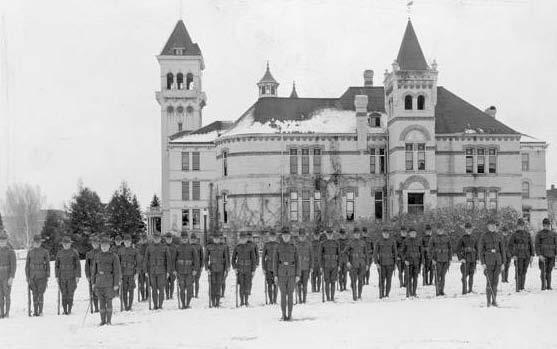
Transferring to the Signal Officers Reserve Corps, Lieutenant Maughan’s commission was vacated 15 August 1917, and he was assigned, as a private first class, to the United States Army School of Military Aeronautics at Berkeley California, for eight weeks of training. He then trained as a pilot at Rockwell Field, San Diego, California. He was commissioned as a first lieutenant, Signal Officers Reserve Corps, 8 January 1918.
Lieutenant Maughan arrived in France 22 March 1918. He received advanced flight training at Issoudun Aerodrome.In June 1918, Lieutenant Maughan was incorrectly reported as missing in action in France, or having having been killed. His parents believed that this was false information spread by Germany as propaganda. Maughan flew his first combat mission 1 September 1918.
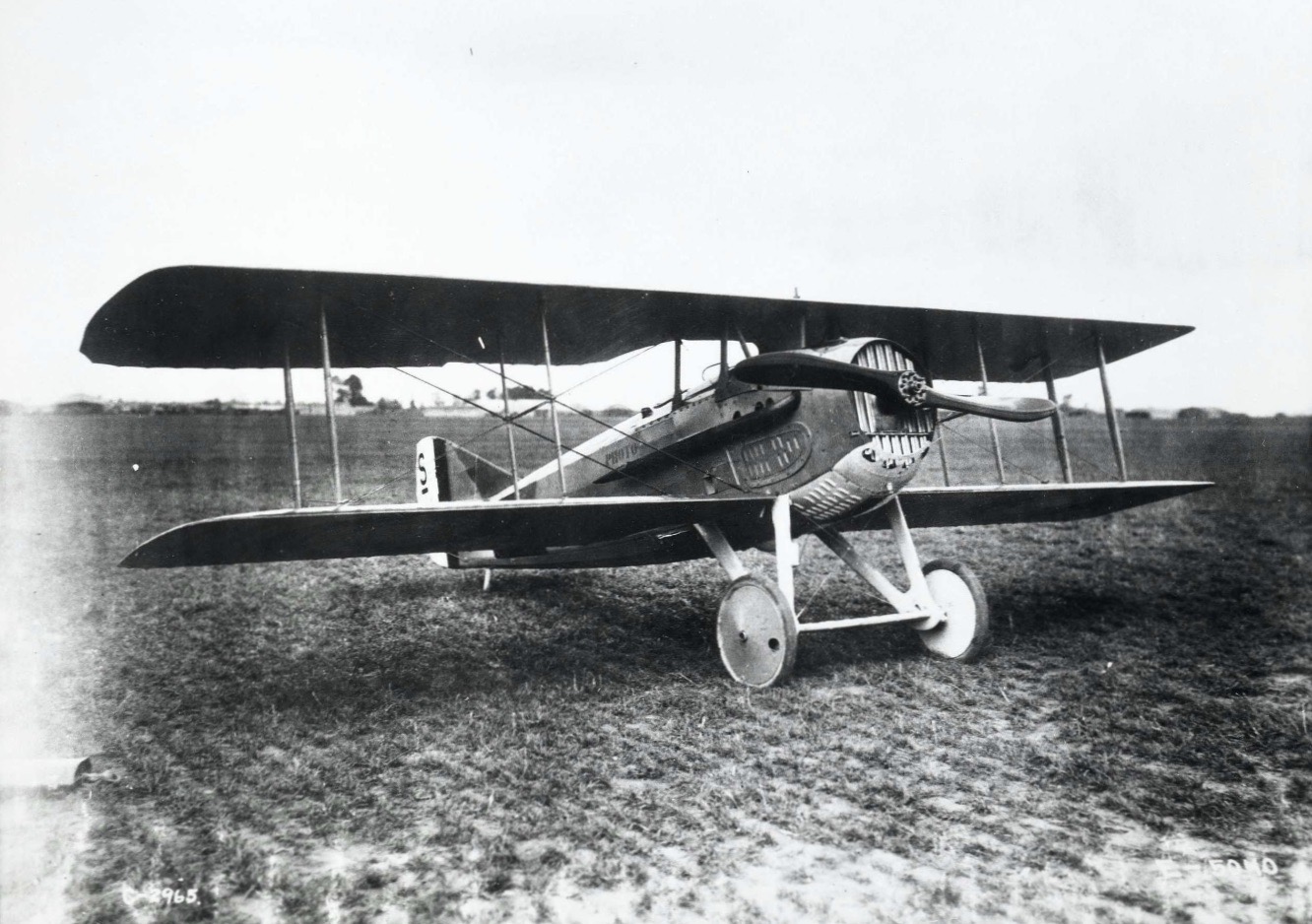
Flying a Société Pour L’Aviation et ses Dérivés SPAD S.XIII C.1, First Lieutenant Maughan was officially credited with four aerial victories during World War I. He shot down one enemy airplane on 10 October 1918, another on 18 October, and two on 27 October. Lieutenant Maughan was awarded the Distinguished Service Cross:
MAUGHAN, RUSSELL L.
- First Lieutenant (Air Service), U.S. Army
- Pilot, 139th Aero Squadron, American Expeditionary Forces
- Citation:

The President of the United States of America, authorized by Act of Congress, July 9, 1918, takes pleasure in presenting the Distinguished Service Cross to First Lieutenant (Air Service) Russell L. Maughan, United States Army Air Service, for extraordinary heroism in action while serving with 138th Aero Squadron, U.S. Army Air Service, A.E.F., near Sommerance, France, 27 October 1918. Accompanied by two other planes, Lieutenant Maughan was patrolling our lines, when he saw slightly below him an enemy plane (Fokker type). When he started an attack upon it he was attacked from behind by four more of the enemy. By several well-directed shots he sent one of his opponents to the earth, and, although the forces of the enemy were again increased by seven planes, he so skillfully maneuvered that he was able to escape toward his lines. While returning he attacked and brought down an enemy plane which was diving on our trenches.
- General Orders: War Department, General Orders No. 46 (1919), Amended Supplement 1
- Action Date: October 27, 1918
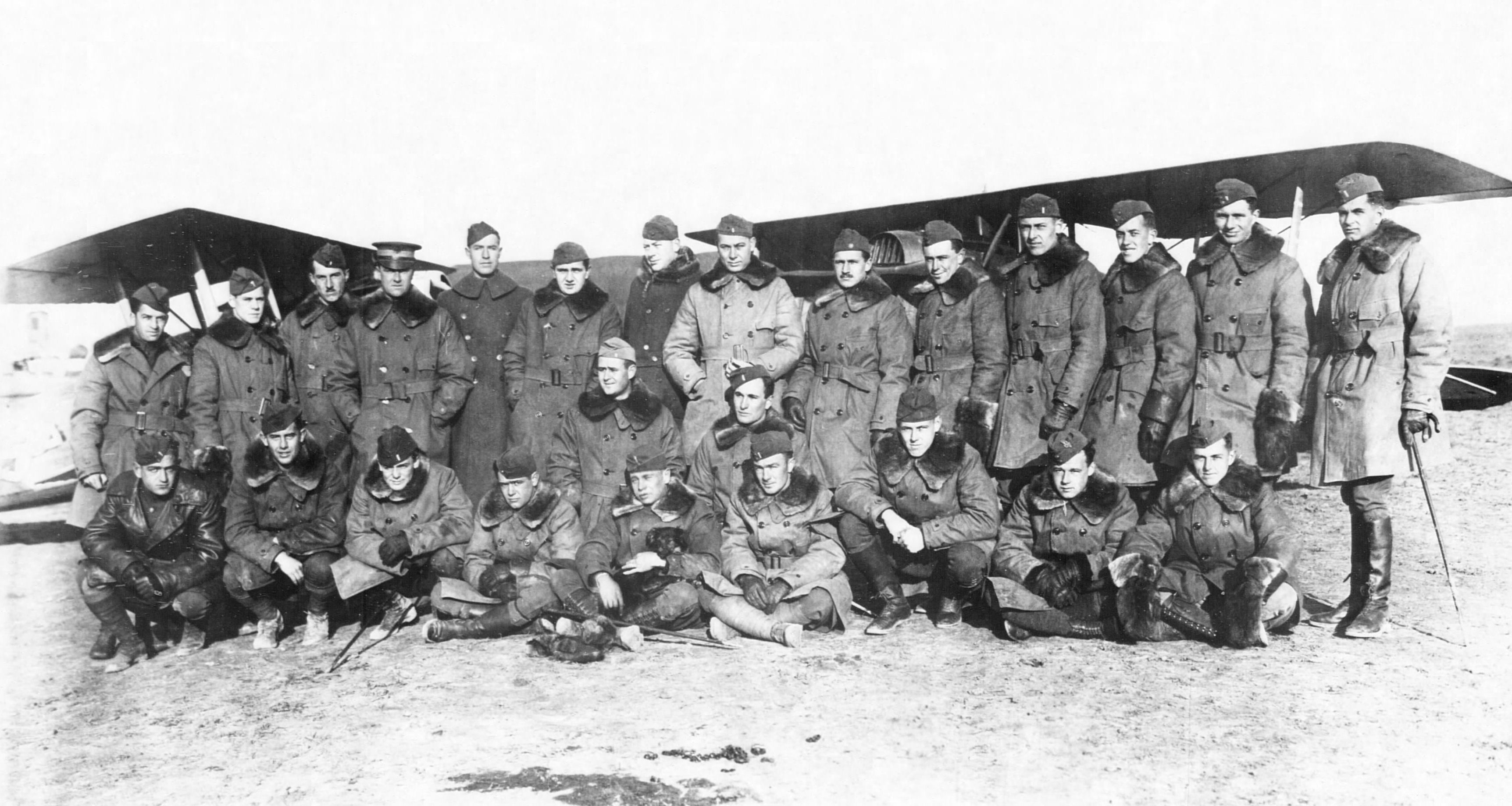
Officers of the 139th Aero Squadron, at Belrain Aerodrome, France, November 1918. 1st Lieutenant Russell L. Maughan is at the center of the photograph, kneeling, in the second row. (U.S. Air Force)
His commission in the Signal Officers Reserve Corps was vacated 10 September 1920 and he was appointed a first lieutenant, Air Service, United States Army, retroactive to 1 July 1920.
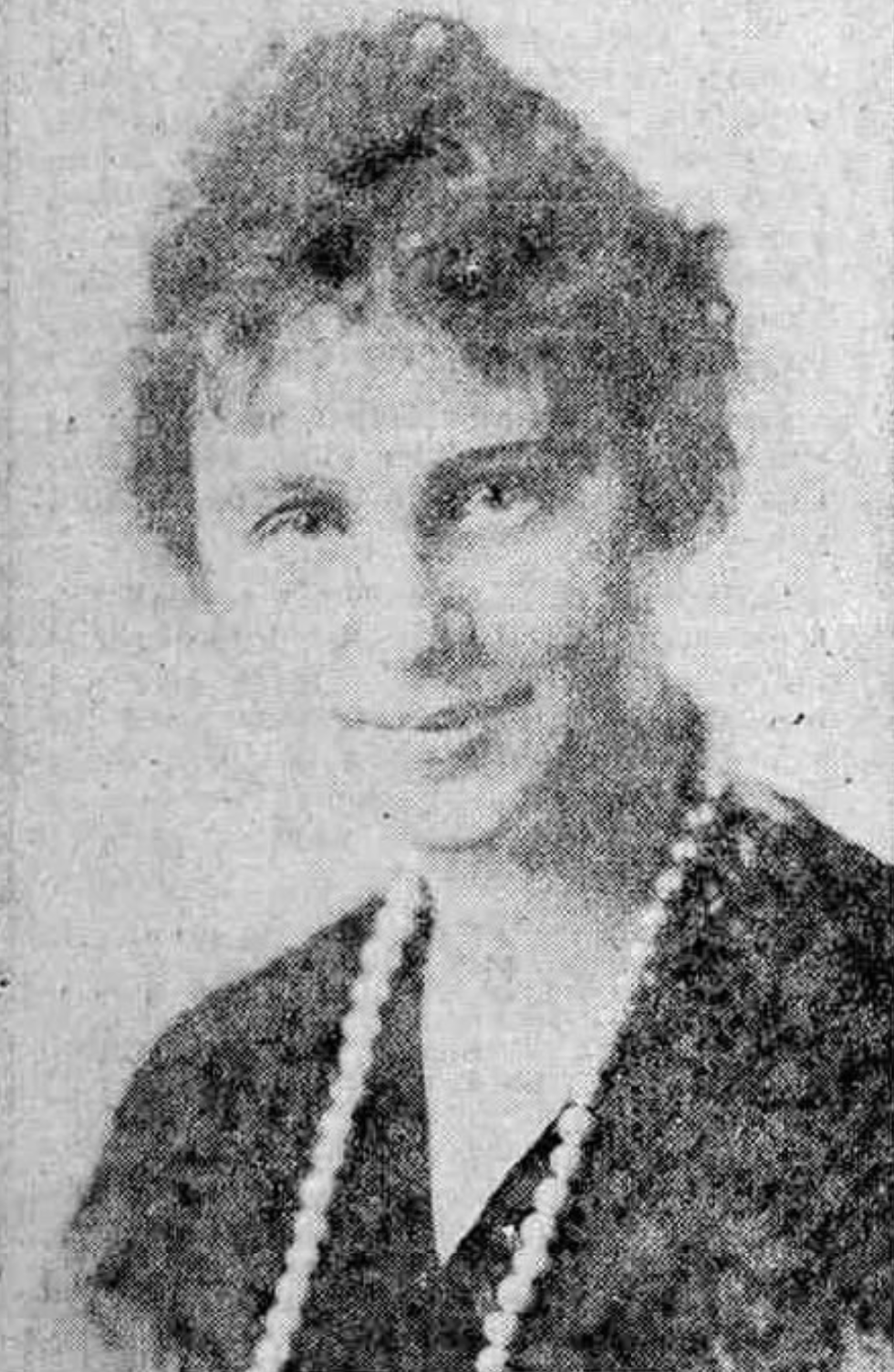 On 14 August 1919, Lieutenant Maughan married Miss Ila May Fisher at Logan, Utah. Miss Fisher was a 1919 graduate of the University of Utah. They would have four children, Russell L., Jr., Weston Fisher, Ila May, and Mary Ann. They divorced sometime after 1940. (His sons, Russell and Weston, both attended the United States Military Academy at West Point, New York. During World War II, Russell, Jr., was awarded the Distinguished Flying Cross.)
On 14 August 1919, Lieutenant Maughan married Miss Ila May Fisher at Logan, Utah. Miss Fisher was a 1919 graduate of the University of Utah. They would have four children, Russell L., Jr., Weston Fisher, Ila May, and Mary Ann. They divorced sometime after 1940. (His sons, Russell and Weston, both attended the United States Military Academy at West Point, New York. During World War II, Russell, Jr., was awarded the Distinguished Flying Cross.)
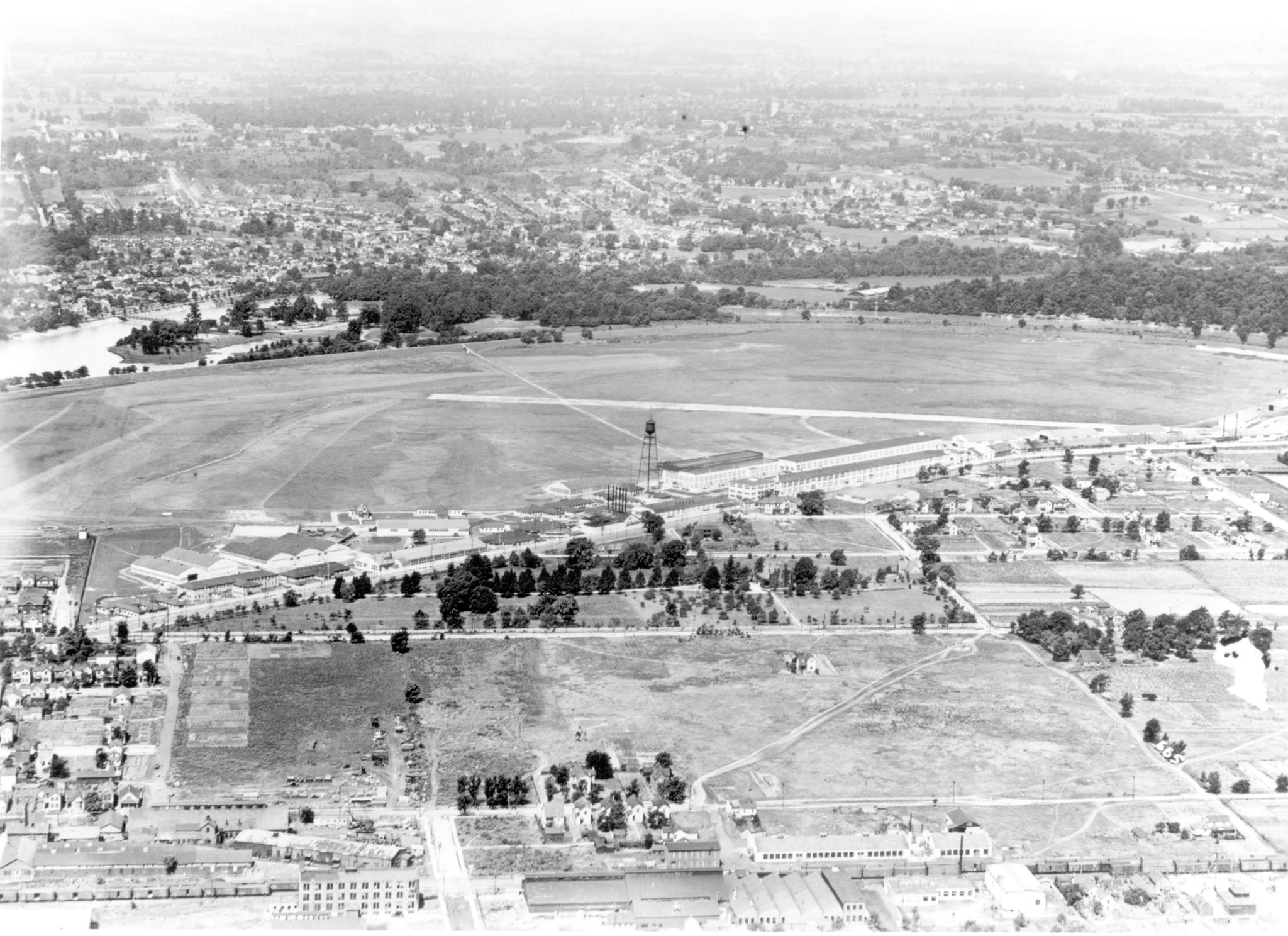
Following the War, Lieutenant Maughan became a test pilot at McCook Field, Ohio. In 1921, he was reassigned to the 91st Observation Squadron, based at the Presidio of San Francisco.
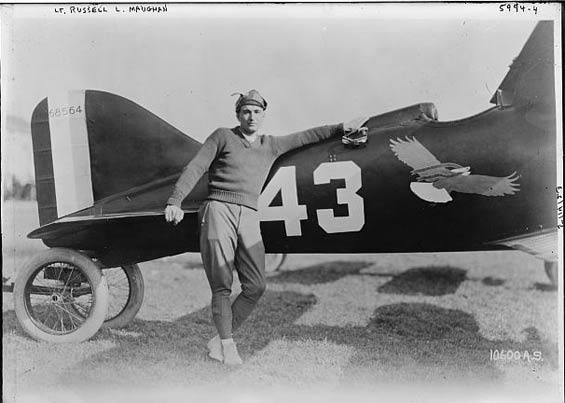
On 14 October 1922, flying a Curtiss R-6 Racer, A.S. 68564, he won the Pulitzer Trophy Race at Selfridge Field, near Mount Clemens, Michigan, before a crowd of 200,000 spectators. He set two Fédération Aéronautique Internationale (FAI) World Speed Records during the race: 330.41 kilometers per hour (205.31 miles per hour) over a distance of 100 kilometers, and 331.46 kilometers per hour (205.96 miles per hour) over a distance of 200 kilometers).
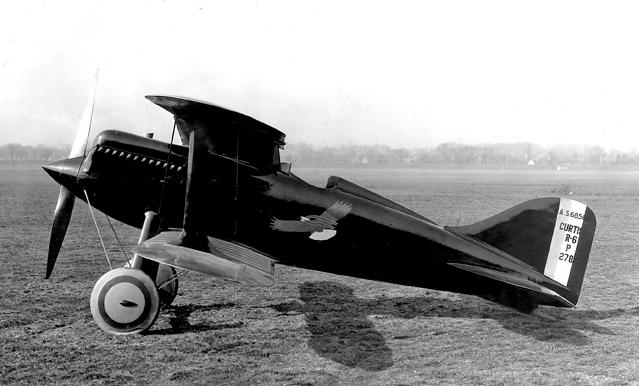
Again flying the Curtiss R-6 Racer, A.S. 68564, on 29 March 1923, Maughan, set a third FAI World Record for Speed of 380.75 kilometers per hour (236.59 miles per hour) at Wilbur Wright Field, Riverside, Ohio.
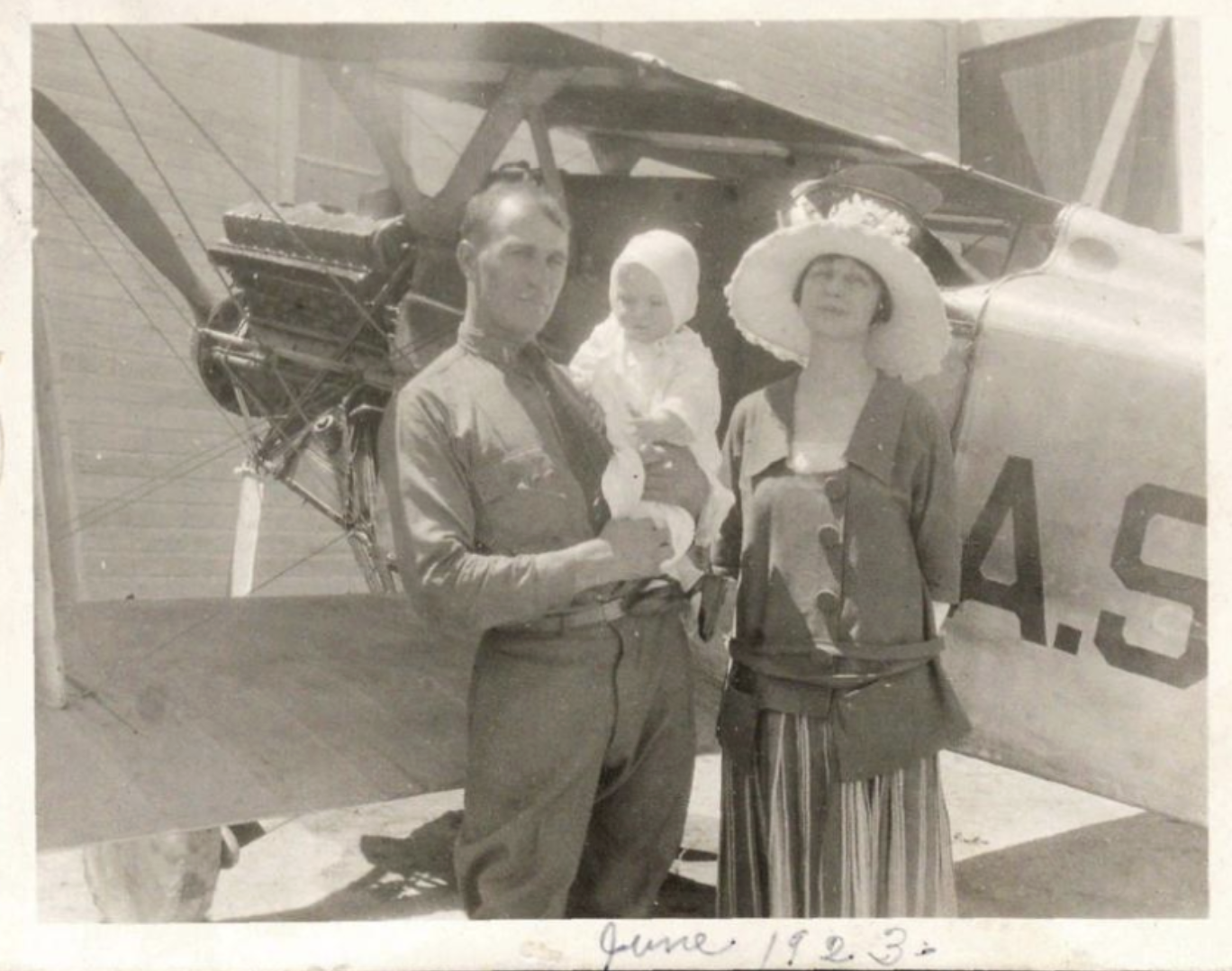
On 9 July 1923, Lieutenant Maughan attempted a transcontinental flight, but his airplane, a Curtiss Aeroplane and Motor Company XPW-8 Hawk, A.S. 23-1201, was damaged on landing at Avenue City, Missouri, and was unable to continue. He made another attempt 10 days later. That flight came to an end when an oil leak forced him to land at Rock Springs, Wyoming.
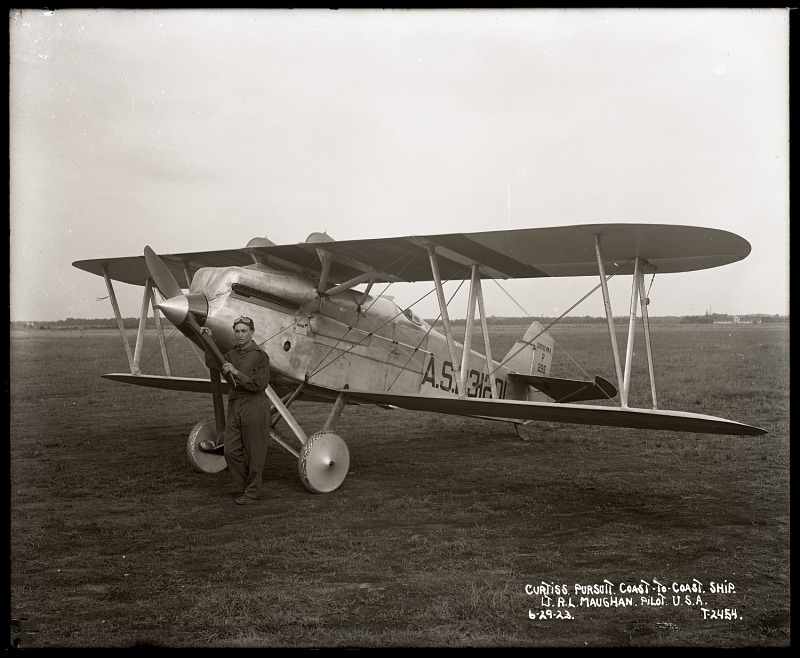
The following year, 23 June 1924, Lieutenant Maughan took off from Mitchel Field, Long Island, New York, at 3:58 a.m., Eastern Time, and flew across the country to land at Crissy Field, at the Presidio of San Francisco, California at 9:46 p.m., Pacific Time. This time he was flying another Curtiss PW-8 Hawk, serial number A.S. 24-204, McCook Field Project Number P-361. He covered a distance of 2,670 miles (4,297 kilometers) in 21 hours, 47 minutes. Maughan’s actual flight time was 20 hours, 48 minutes. He averaged 128.37 miles per hour (206.59 kilometers per hour).
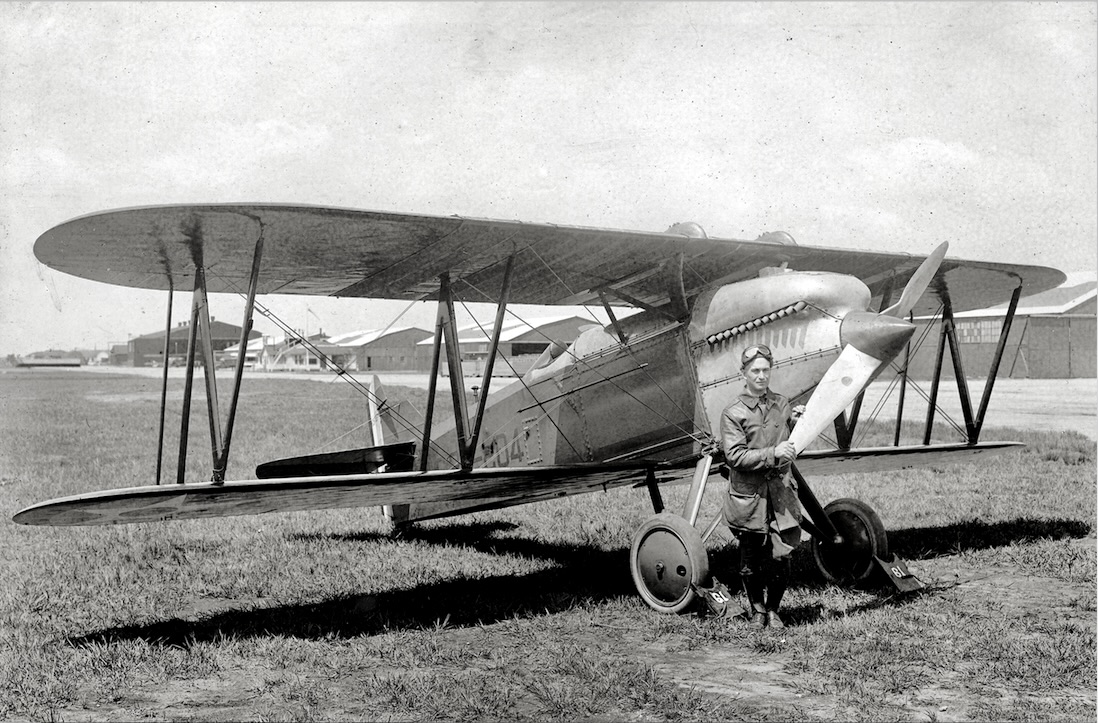
This was the “Dawn-to-Dusk Flight.” A bill was introduced in Congress by Representative Paul H. Hunt of Utah, to advance Lieutenant Maughan 500 numbers on the U.S. Army’s list of first lieutenants. For this transcontinental flight, Maughan was awarded the Distinguished Flying Cross. (Maughan’s D.F.C. was not authorized until 20 February 1928. It was presented to Maughan by Colonel Paul H. McCook, commanding officer, 104th Division, at Fort Douglas, Salt Lake City, Utah, 6 August 1928.)

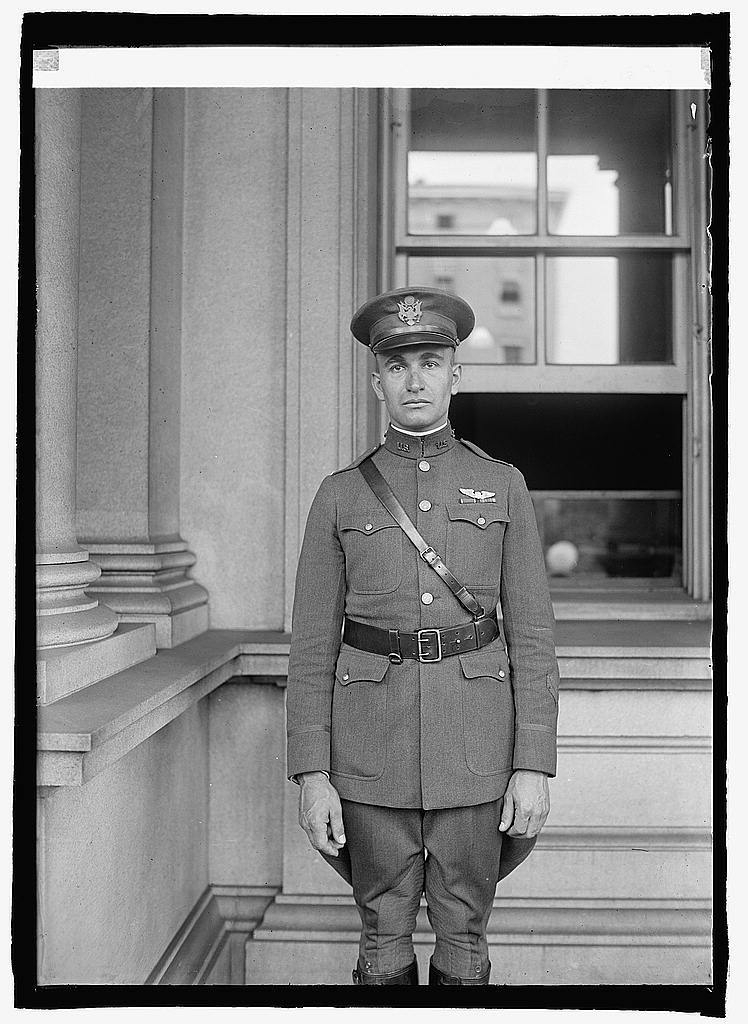
In 1924, Lieutenant Maughan was assigned to Kelly Field, Texas, as a flight instructor. One of his students was Charles Augustus Lindbergh.
On 1 October 1930, Maughan was promoted to captain, United States Army Air Corps. He served in the Philippine Islands from 1930 to 1935, acting as an advisor to the government until 1932. From 1932 to 1935, he served as the post operations officer. He and his family lived in Manila. They returned to the United States aboard SS Columbus, a Norddeutscher Lloyd passenger liner, arriving at New York City from Southampton, 18 August 1935.
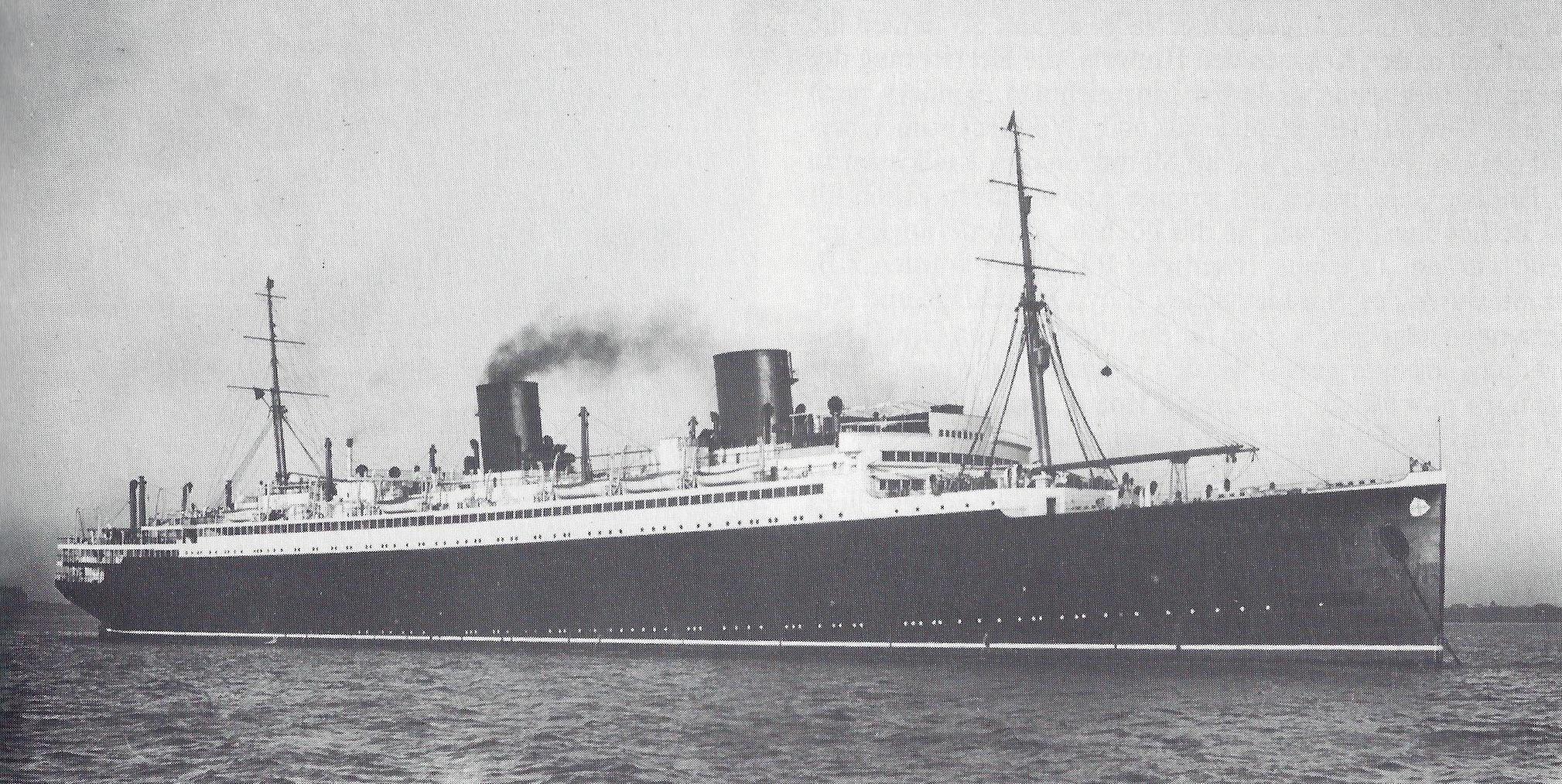
Captain Maughan attended the Air Corps Tactical School at Maxwell Field, Alabama, in 1936, and the Army Industrial College in Washington, D.C., for the 1936–1937 course of instruction. On 16 June 1936, Captain Maughan was promoted to major (temporary). That rank was made permanent 12 June 1939. He was again promoted, this time to lieutenant colonel, Army of the United States (A.U.S.), 11 March 1940. His A.U.S. rank was vacated 15 October 1941, and his rank as lieutenant colonel, United States Army, was made permanent. Just prior to World War II, Lieutenant Colonel Maughan was sent on a survey tour to identify suitable locations for airfields in Greenland.
In January 1941, Lieutenant Colonel Maughan became the first commanding officer of the 30th Air Base Group at Langley Field, Virginia. He was relieved of this assignment in July and was sent on a survey tour to identify suitable locations for airfields in Greenland.
Lieutenant Colonel Maughan commanded the 60th Transport Group, a Douglas C-47 unit, and also served as acting commanding officer of Westover Army Air Field, Chicopee, Massachusetts. On 27 January 1942, he was promoted to the rank of colonel (temporary), with his date of rank retroactive to 5 January. He then he commanded the 51st Troop Carrier Wing, which included the 60th, as well as eight other transport groups, during Operation Torch, the Allied invasion of North Africa.
Colonel Maughan later commanded Lemoore Army Air Field, California, in 1943. He was assigned as commanding officer at Portland Army Air Field, Oregon, 10 July 1944.
On 25 October 1946, Colonel Maughan married Miss Lois Rae Roylance at Reno, Nevada. She was 21 years his junior. They lived in Portland, Oregon.
Colonel Maughan was discharged from the U.S. Air Force, 30 November 1947, at the U.S. Army Hospital at Valley Forge, Pennsylvania. The reason was disability in the line of duty.
For his military service, Colonel Maughan was awarded the Distinguished Service Cross, the Distinguished Flying Cross, the World War I Victory Medal, the American Defense Service Medal, American Campaign Medal, European-African-Middle Eastern Campaign Medal, and the World War II Victory Medal.
Colonel Russell Lowell Maughan, United States Air Force (Retired), developed ventricular fibrillation while undergoing surgery at the 3700th U.S. Air Force Hospital, Lackland Air Force Base, San Antonio, Texas, 21 April 1958. He died two hours later. He was 65 years of age. He was buried at the Logan City Cemetery, Logan, Utah.
© 2025, Bryan R. Swopes
